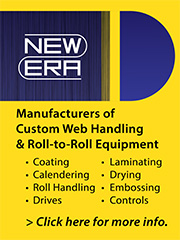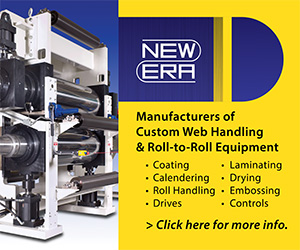Coating Matters | Rigid Panel Coating with Slot Die Equipment
- Published: August 30, 2018
Panel coating is a unique application of fluid coating technology that provides capability and functionality to a discrete substrate. But what is important to understand and what tradeoffs exist?
Unlike continuous coating application against a moving substrate, we are trying to develop steady state control over an intermittent process. The fluid needs to exit the slot die only when we want it to and stop flowing before a mess is made. In intermittent
Like continuous coating, the math and physics involved to control flow and predict behavior for
FLUID RHEOLOGY
Many fluids can be coated onto rigid panels, so what are the key factors to be aware of in the fluid chemistry, surface energy
There are two main techniques for coating rigid panels – proximity and curtain coating. Both utilize slot dies, but each has a different set of criteria to develop successful performance.
In proximity coating, the gap maintained between the slot die lip face and the rigid panel is 1-2 times the wet coating thickness. So, the lower the wet coat weight, the closer the slot die gets to the substrate. For rigid panels that have variation in
For very light coat weights (less than 1 mil or 25.4 microns), curtain coating should be considered. For curtain coating, the critical calculation of success is the Weber number. No heavy math is required, just a simple understanding of the fluid and the equipment setup.
We = ρQV/σ
We = Weber number
ρ = density
Q = volumetric flow rate
V = impingement velocity
σ = surface tension
This simple equation helps us determine the success of coating based
One of the big differences between proximity and curtain coating is the area coated. In proximity
EQUIPMENT DESIGN
How about the equipment utilized? First of all, the slot die is going to be positioned vertically. Why does this matter? Air. Evil air. When the fluid initially fills the manifold of the slot die, the air in the system wants to rise to the highest point. For a vertically oriented slot die, this means that the air will travel to the back of the manifold or the joint of attachment for the fluid delivery pipe or tube. If the air has no release mechanism, then the air will slowly release over time, causing coating defects. Ideally, a purge valve will be placed either in the back line of the manifold or the fluid delivery tube, whatever the highest point in the system is. Once the slot die is filled and purged, the air will release and then operate correctly. Without a purge mechanism,
OPERATION
After the equipment is set-up correctly, the coating of the rigid panel can still have issues. These issues can include the variation in the substrate, control of the travel and potential environmental factors. Let’s break these down a little.
Especially in glass substrates, the surface flatness can vary tremendously. If the final product requires micron level control, and the equipment is precisely manufactured to deliver micron level performance, the product may still fail if the substrate variation exceeds the coating specification. Make sure that the substrate flatness meets or exceeds the flatness requirement for coating caliper control both cross web and down
Another key factor in the coating of rigid panels is how to properly handle the substrate. Should the slot die move over the panel or should the panel move under the slot die? Can the panel be held stable with a vacuum table, or will the suction cause damage to the substrate? These factors need to be considered to properly design the equipment. Consider the stability and weight of the equipment traveling during the process.
Environmental factors come into play for both proximity and curtain coating, but more so in curtain coating. Because of the larger gap created in curtain coating we have to be concerned with air in the room disrupting the curtain. With proximity coating, room air won’t cause a fluid disturbance to the same extent as curtain coating, but mechanical vibration and environmental debris can cause coating defects. Make sure the fluid and substrate are clean before coating.
CONCLUSION
Rigid panel coating is becoming more and more commonplace. Understanding the variables to consider will help your company attack this multi-variable process with the right tools for success. If you work through the questions presented here, you will have a deeper understanding of how to successfully coat panels and limit coating defects.
 Mark D. Miller,
Mark D. Miller,







